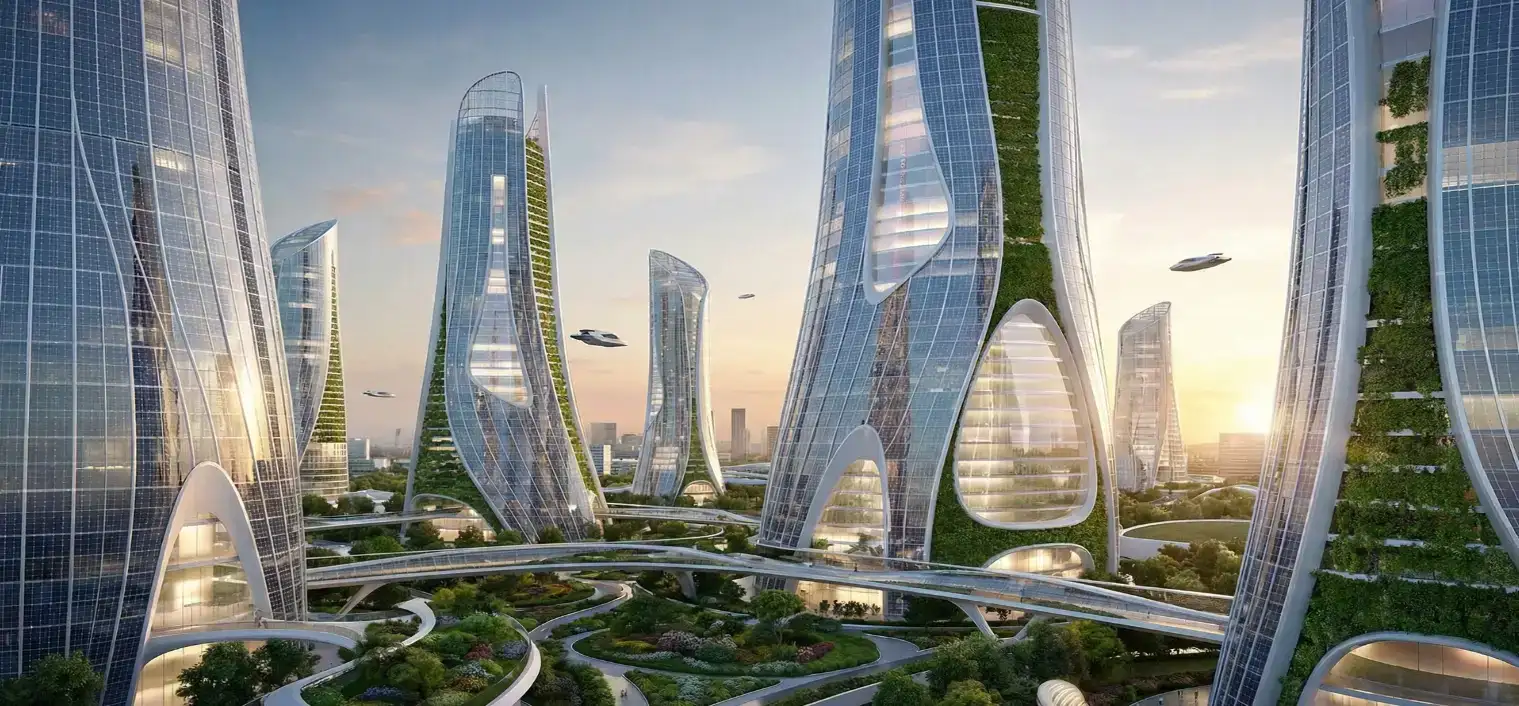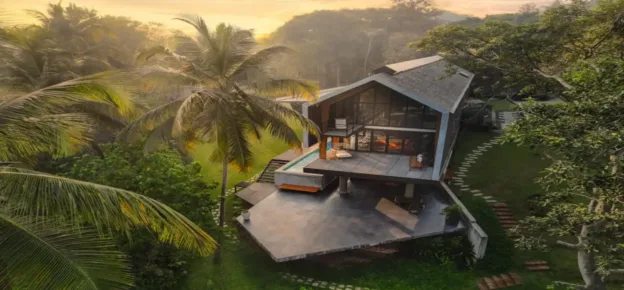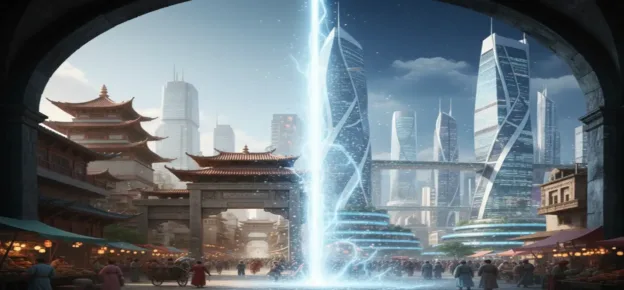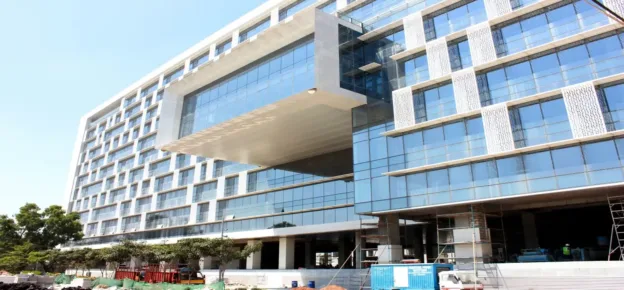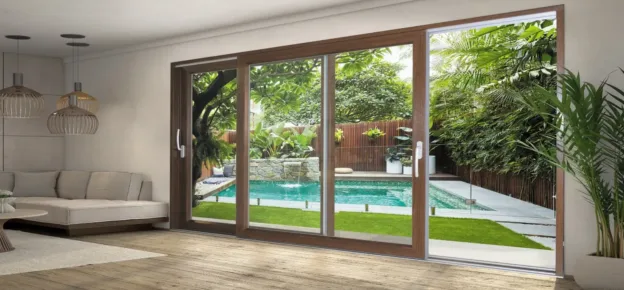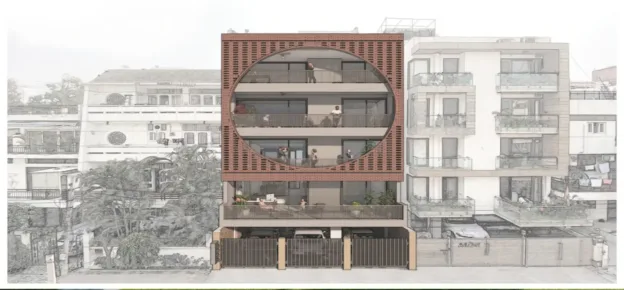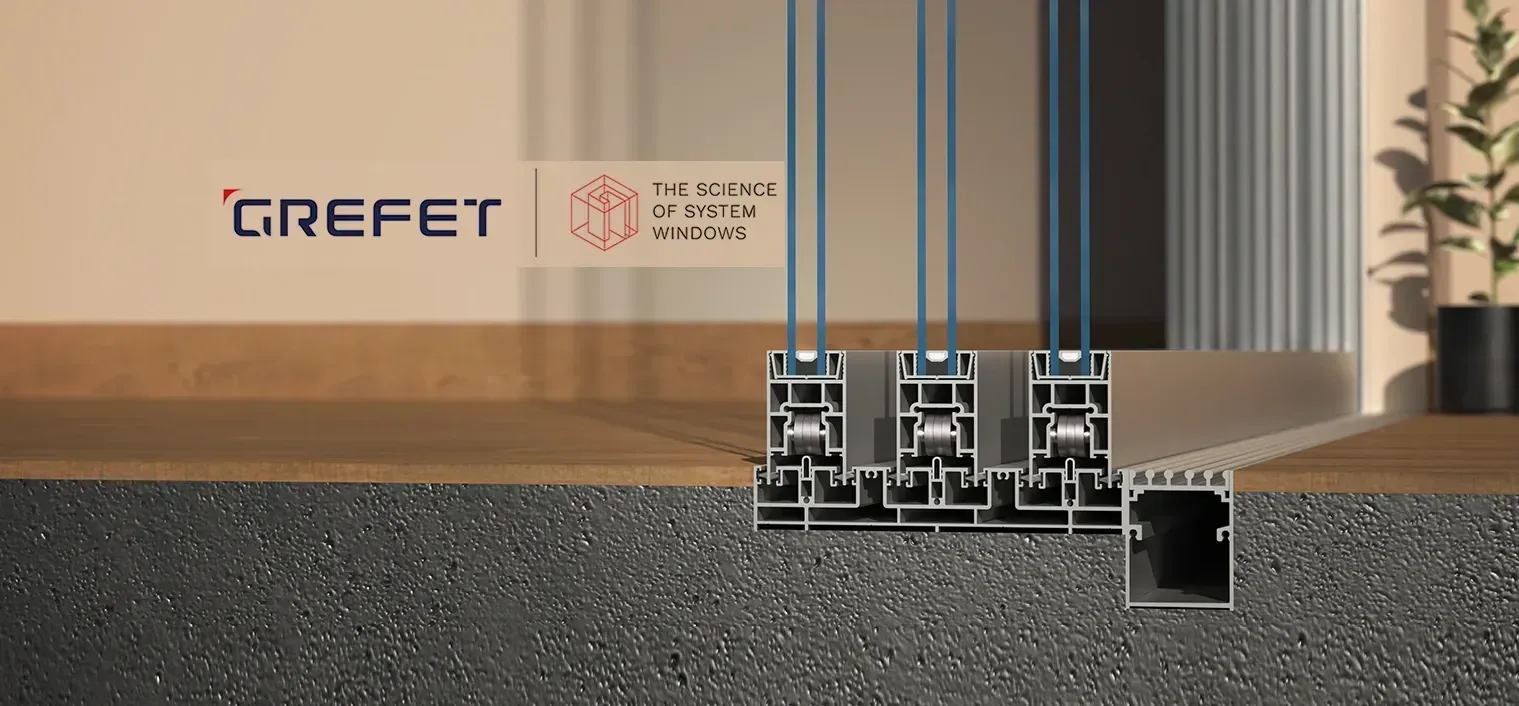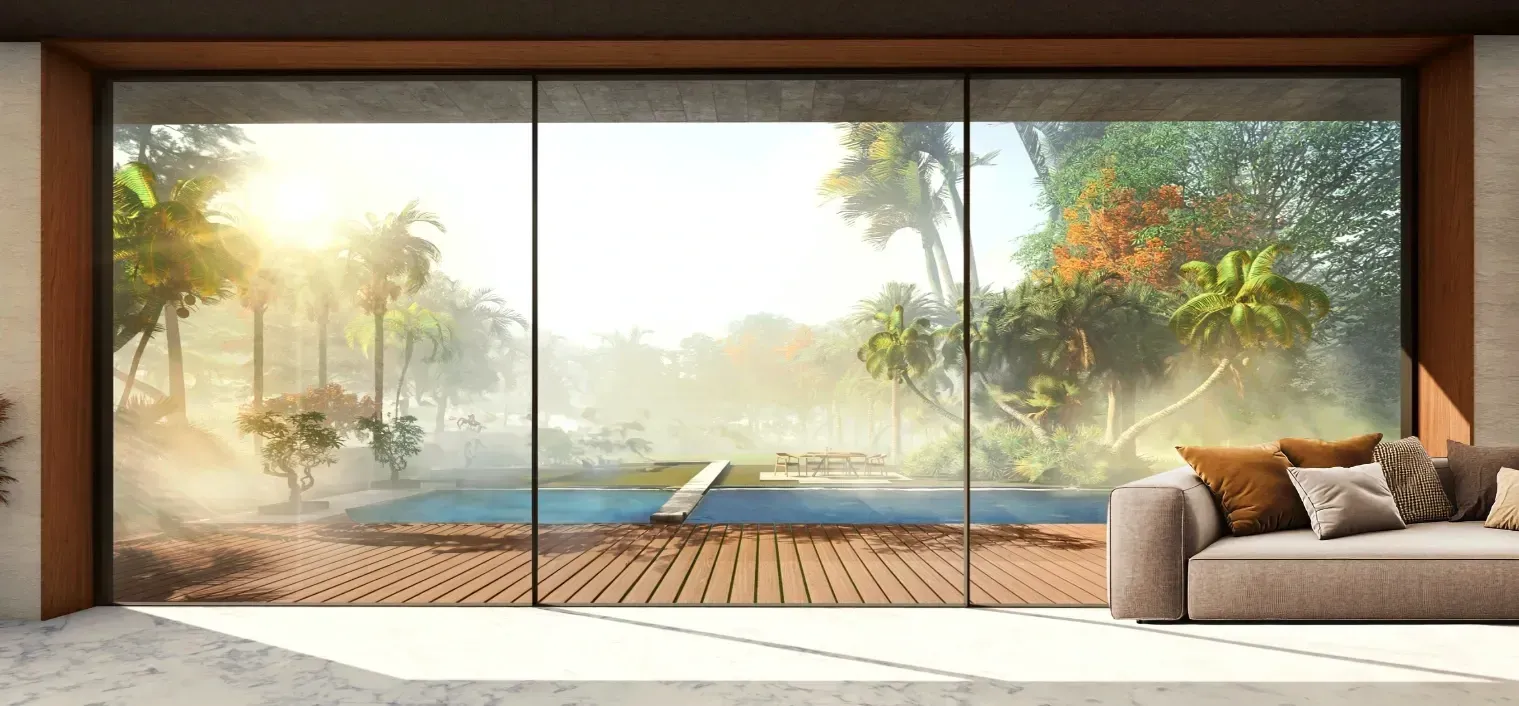Façades are an indispensable and essential part of a building’s overall aesthetic as well as usability. Over the years, advancements in technology and the availability of sustainable and innovative materials have transformed the purpose, identity, and designs of façades and fenestrations. With the advancement of the industrial revolution, façades transformed drastically from bulk masses to fully transparent frameless glass panes, connecting inside with the outside. In future, with the progress in technology, we will find a sea change in the design approach and use of façades. Human imagination is endless and probably unstoppable. Novelty constantly attracts everyone, and the architect has a great responsibility to strike the right balance between human aspirations and our ecosystem. The construction industry is a huge contributor to environmental degradation worldwide. According to the International Energy Agency, the building and building construction sector combined are responsible for 36 per cent of global energy consumption. There are many ways for a building to be more environmentally sensitive. The simplest way is to design buildings that are energy harvesting, sensitive to local climate and thus need less energy to build and operate. WFM spoke to many experts, including many architects, façade consultants and other professionals, checking with them and questioning them on the key characteristics they look for in high-performance façades, and their outlook on future façades. The focus of this article is to help you choose the right kind of design and materials for the façades of the future. Read on…

The façades have the power to transform the occupant experience and energy consumption. Façades are not just aesthetic skins over the buildings; they have a large role to play in how the buildings function and interact with their occupants.
Key Characters Of High-Performance Façades And Fenestrations

In architecture, the building envelope, otherwise known as a façade, is increasingly becoming important in terms of building performance and architectural design. The façade is the only interface dividing the interiors and exteriors, where the design of this spatial boundary should allow a seamless transition, says Ar. Anil Badan, Principal Architect, Studio B Architects.

Façades and building envelopes determine visual identity, character, and the expression of architecture. Façade in a building is placed at the intersections of the interior and exterior environment; these play an integral part in the building aesthetics as well as the performance of the structure. Thereby, an integrated optimisation of the conflicting performance criteria of cooling load, daylighting, sound insulation, occupant comfort, structural stability, cost, and aesthetics requires an advanced façade design process, explains Shweta Kaw, Principal, Studio Meraki. Thus, high-performance façades should primarily be looking into putting up a balancing act amongst all the above-mentioned key players, as façades can have up to 40% impact on the total energy use of the building and also significantly impact the occupant productivity within a building.

The material of a façade, says Ar. Amit Gulati, Founder, Design21, is of paramount importance. Before deciding on material or design, one has to think about objective, colour, safety, comfort, sound insulation, thermal insulation, glare control, passive heat gain and loss, surrounding structures, and many other essential factors. High-performance materials aid in controlling the light, heat, and sound in a structure in order to create the optimal comfort range for the users. The right type of material will also aid in energy and building efficiency. These materials reduce the ingress of heat and, at the same time, allow a higher percentage of daylight into the building. The lower the shading coefficient of glazing, the better the material is at preventing solar heat gain.

According to Ar. H.H. Nishanth & Ar. Veda T.N., Associate Director, Architecture, Katerra Design, the key characteristics of an efficient high-performance façade are:
- Must be climate, region and building function specific for it to be efficient in providing a comfortable interior environment for its occupants.
- Must enable daylight penetration into the building while cutting down the heat and glare, providing comfortable, well-lit interiors.
- Good acoustic performance to provide sound insulation from the external environment.
- Must be durable and futureproof with the ability to adapt to future requirements.
- Façade systems, screening and fenestration design must work in tandem to achieve the goals of aesthetics, responding to climate, good visual light transmission and cutting of heat gain and glare. This also makes the building system a lot more efficient and sustainable.

Ar. Rohit Krishna Gulati, Principal Architect, Incubis Architects, also agrees that high-performance commercial building façades incorporate comprehensive (passive and active) design features and systems that incorporate daylighting, solar heat-gain control, ventilation and space conditioning, leading to enhanced sun protection and cooling-load control, increased thermal comfort, and ample daylighting.

According to Ar. Gulati, the key characteristics of high-performance façades include providing visual focus and intent from inside to outside, depending on the use and function of the space within, and accordingly provide for minimum glazing and moderate window-wall ratios; providing adequate natural ventilation and controlled daylight based architectural features based on the solar-orientation of the façade; and providing passive and/or active systems to control heat-gain and minimise lifecycle costs for space conditioning. He adds that the highest performance is likely to be achieved when all measures are conceived, designed and executed in an integrated manner.

“When it comes to designing and creating a façade or fenestration that is high-performance in nature, the impact on the daylight needs to be calculated and considered. As daylight and views can have a drastic impact on the real estate value of a building, a façade must factor in building massing, window-to-wall ratio, the orientation of glass, visual transmittance of glass, solar shading strategies and more that can have a significant impact on the amount and quality of daylight penetration”, observes Ar. Sumit Dhawan, Founder and Principal Architect at Cityspace ‘82 Architects.

Ar. Parag V Singal, Principal Architect- Parag Singal Architects, says that a high-performance façade & fenestration not only increases the thermal comfort level of the occupants but also lowers the energy consumption of the building. The façade design must be such that the reduced heat gain does not lead to loss of daylight. To summarise, a high-performance Façade & fenestration is essentially a comprehensive system that incorporates sufficient daylight, controls solar heat gain and ventilation.
Thus, it is understood that high-performance façades maintain constant comfort in terms of light, heat, and sound to create the optimal space that can be enjoyed by the user. The façade can also be retrofitted with solar panels, wind tunnels, etc., hence, reducing the power consumption of the building, says Ar. Badan. High-performance façades not only help in the temperature control of the indoors but also maintain a certain lux level, reduce energy consumption and create a soft transition between the indoors and outdoors, adds Badan.

Looking At The Paradigm Shift
As the world becomes more technologically driven, the old façades used for simple purposes like temperature control and limiting energy consumption will be easily replaced by automated façade patterns. At the same time, the materials used to make the façade are also envisaged to be much more sustainable. Many materials used in the building of façades, such as aluminium, glass, and steel, can be used more frequently, making a truly sustainable façade. Talking about the future façades, Ar. Dhawan predicts that both kinetic façades and bio façades that use the power of photosynthesis are the next choices to be an eco-friendly alternative to the façades that use fossil fuels.
Advancements in computational technologies over the past few years have resulted in a revolution in the façade industry, notes Ar. Kaw. Not just a surge in visually enticing and more efficient materials, but there has been an ever-increasing jump in technologically challenging intelligent façade systems, as well as green façades. Kinetic façades, in which the panels open and close throughout the day in response to the sun’s movement, thereby balancing heat ingress and daylight to enter the building as required and green façades have seen a rise, especially keeping in sync with the philosophy of a sustainable green future. Parametric façades owe their birth to the digitisation of production and technological resources, bringing advantages in both aesthetics and efficacy. The potential to produce flexible designs, complex and uneven geometries, better product visualisation, faster design iterations, and quick turnaround has increased their popularity amongst architects and designers. Biomimicry-inspired living façades, wherein we mimic nature and try to avail the utmost benefits that one can have from them at minimum cost, have also started gaining ground.

Ar. Amit Gulati expects a paradigm shift in façade design – regarding its requirements, roles, and responsibilities. The design of façades that do not become obsolete and gel perfectly with the building interiors while still managing to reflect the culture around the building is the need of the hour, adds Gulati. “One exciting feature for façades is humanisation, with which the façades could focus on human needs and understand their interaction with the environment. Another popular trend would be ventilated façades, which are essentially an energy-efficient system that allows for an active exchange of air,” says Gulati. One façade design that we think will be popular in the future is parametric design, predicts Ar. Badan. Parametric design is envisaged to be a paradigm in design where the relationship between elements can be manipulated to form complex geometric designs and structures. This design process uses algorithmic relations to create multiple possible designs.
Revolutionary Advancement In Façade And Fenestration Designs, Technologies & Materials
Inspired by the computational changes and the rapid advancements in the world of architecture and design, façade design has grown by leaps and bounds in the past five years. When comparing the present face design to a design that was popular five years ago, one can see a vast difference between them. One of the noteworthy advancements made in the façade design sector is the introduction of smog-neutralising façades, notes Ar. Dhawan, this idea was originally conceptualised in Berlin, but this façade design made of steel and plastic does a fantastic job of reducing air pollution. Another development that has been seen over the last five years is the use of homeostatic façades, initially developed by a firm in New York City. In this case, the building’s climate is controlled on the basis of the external environment automatically.
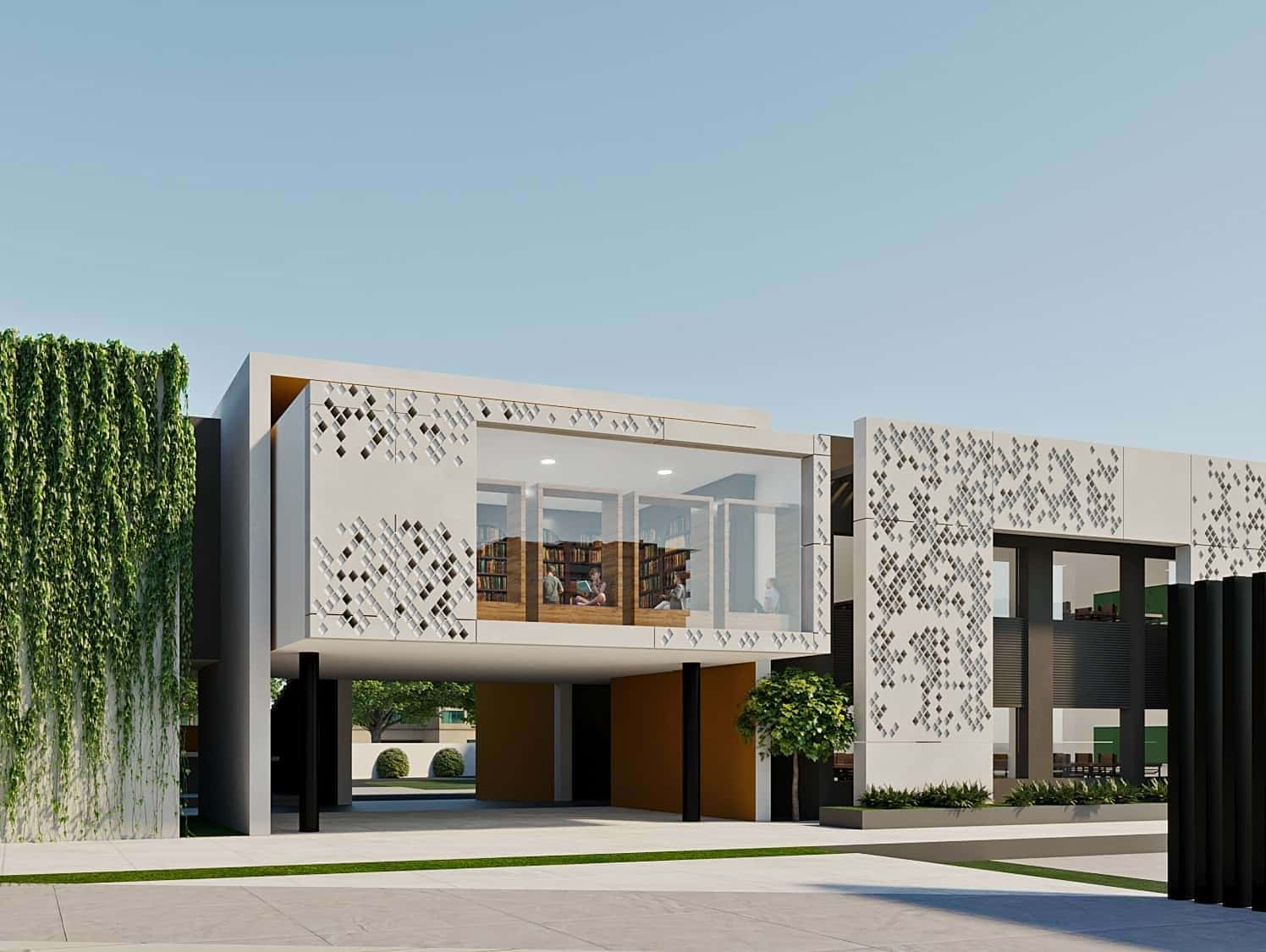
Ar. Amit Gulati observes that the industry has witnessed a considerable change in terms of new material usage, façade treatments, and even technological advancements. “Façades these days have become more of a functional element in addition to their aesthetic importance. Materials like glass, wood composite plastics, tiles, dry cladding systems, sunscreens, aluminium, and titanium are becoming increasingly popular,” observes Ar. Amit Gulati and Ar. Badan. The architecture and design of commercial, institutional, residential, or public buildings are adapting to include an integrated façade system that aids in building performance and energy consumption, points out Ar. Badan. Ar. Amit adds that in India, one of the significant developments in urban construction is the IT/BPO boom, which has led to a noteworthy transformation in the urban skyline. The buildings have presented mind-numbing possibilities both in terms of design and use of modern materials. The architecture and design of commercial spaces like malls, hospitals, public utilities, and even educational institutions are adapting to include an integrated façade system, aiding in the building performance.

Technology and digitalisation are transforming our world into a more and more intelligent place each day. Façade technology has also advanced in the recent past, and building façades will continue to become more and more intelligent in the coming years. Ar. Nishanth & Ar. Veda from Katerra Design adds that technological advancements in the façade systems have enabled architects to achieve cutting-edge and complex façade design. According to them, the following advancements brought a revolution in the present-day façades:
- Automated façade and window systems make buildings energy-efficient, secure and weatherproof.
- Dynamic glass with an electrochromic coating that automatically changes its properties based on the climatic conditions outside. This, depending on the building orientation, reduces the need for shading devices and interior blinds.
- BIPV (Building Integrated Photovoltaic) façade systems integrate solar power generation with façade and open building terraces for better usage.
- Photosensitive shading devices that automatically change orientation based on the changing sun angles throughout the day. This complements a high-performance glazing system and provides a smart solution to efficient façade design.
- Smart glass screens that sense occupants and accordingly change from transparent to opaque for screening, making interior spaces very dynamic.
Some of the path-breaking innovations have been electrochromic and photovoltaic glass, agrees Ar. Singal. Such glasses have been widely used in interiors, especially in offices, to create private spaces as needed. But now the same technology has found its way to the exteriors and is being actively used in building façades. “The ability of electrochromic glass to go from translucent to opaque has been facilitating offices to reduce the solar heat gain dramatically while keeping the visual connection with the outside world as per need,” he adds.

The use of photovoltaic glass enables the building to produce its own energy and reduce its carbon footprint. Since the cells are sandwiched between two glass panels, the said glass is not 100% transparent. This not only enables cutting down on the extra sunlight entering the premises, but it can be utilised to create beautiful patterns when mixed with standard glazing, explains Ar. Singal.
Ar. Kaw too vouches that electrochromic/photochromic glass usage, along with reflective coatings and the variety of façade materials, has grown not just in terms of aesthetics or functionality but is having a major hand in contributing to the environment as well.
Ar. RK Gulati talks about several advancements, especially in control systems, technologies and materials over the last few years. In his opinion, the key revolutionary innovation is the improved availability and increased use of analytical 3D modelling software that can calculate energy use and predict life-cycle costs based on the combination of design features and specification features employed. These have resulted in the ability to model different options and analyse iterations accurately and quickly, leading to lower design time with a much higher level of predictability. The resultant data being integrated into BIM systems will lead to improved coordination and execution methodologies. “This will help us achieve our sustainability goals faster, apart from improved energy efficiency and productivity,” infers Ar. RK Gulati.

Innovations In Materials & Technologies
The façade and fenestration industry is extremely technology-driven, where innovations keep happening. Currently, sustainable buildings are the leading trend in the construction industry. This increases the demand for environmentally friendly and automated façades and fenestration solutions. Ar. Amit Gulati notes that products like high-performance glass use the least amount of energy to maintain a comfortable environment inside the building. Technological advancements have made it feasible to manipulate the percentage of transmittance, reflectance, and heat absorption of different wavelengths. Much of the recent innovation in glass for fenestration products has been focused on controlling solar radiation, thus improving building performance and reducing maintenance costs. In real-life applications, it can be seen that when a certain panel or glass has been used, it is easier to control the internal temperature homeostasis. At the same time, beautiful façades are also a must in commercial buildings like malls or retail outlets, and these façades can attract more people.
Besides glass, durable, malleable, and scalable materials like aluminium, zinc, and concrete will soon be the go-to choice for many architects who play an essential role in the innovations made in the field of façade building, envisaged by Ar. Dhawan. According to him, the design of façades has been highly complex, but at the same time, they are vital in determining the overall use and flexibility of the building.
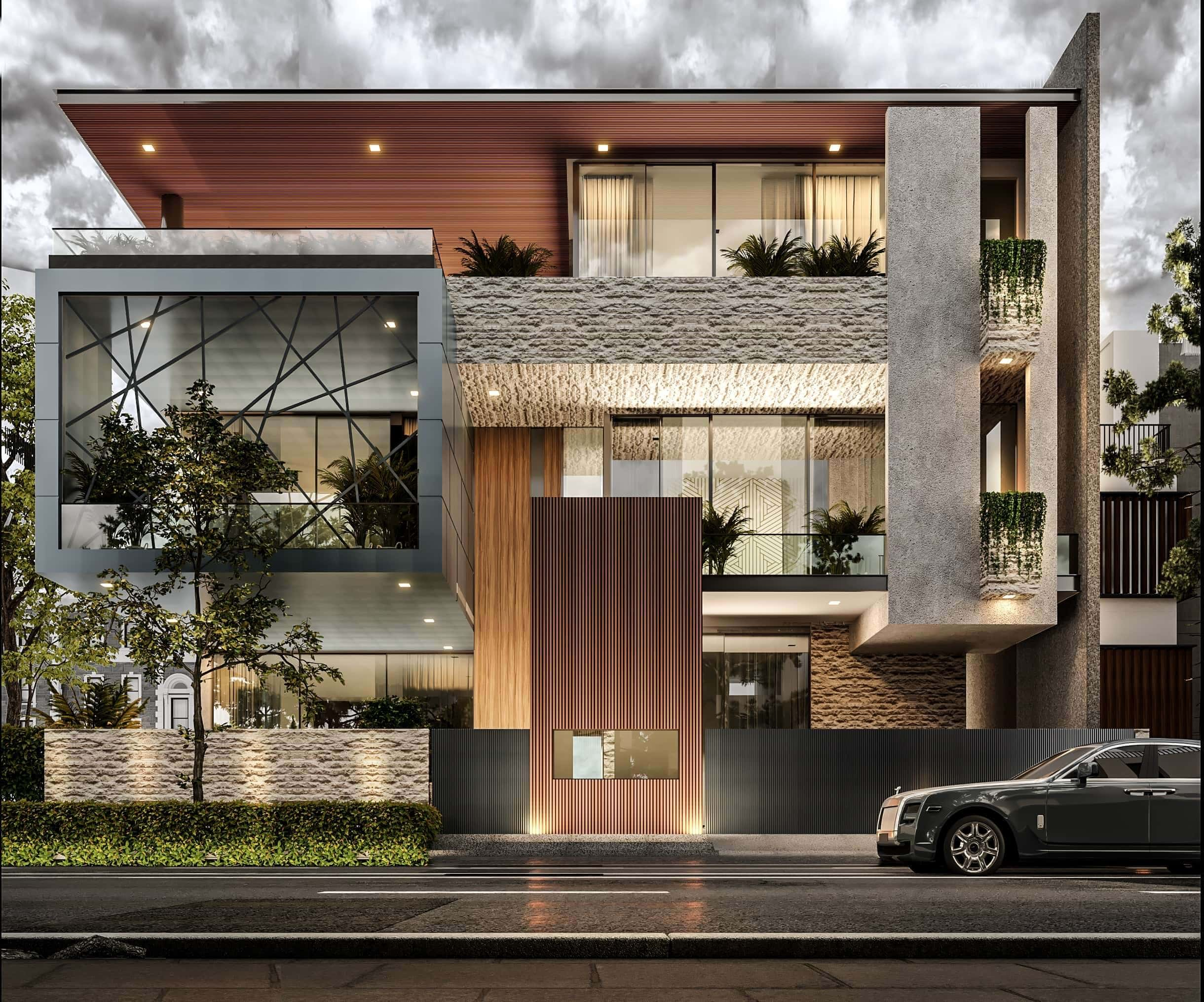
Architects Nishanth and Veda assure that advancements in technology like façade simulation studies are assisting in deciding the right fenestration and glazing parameters like sizes, modules, orientation and locations. “As the global temperature rises, we also see the rise of innovative and energy-efficient façade materials as an alternative to glass,” they predict. This will all lead to highly sustainable and energy-efficient façades. Technological advancements in the façade system design have enabled architects to achieve cutting-edge and complex façade design.
Software like the Grasshopper, Rhino, etc., have made parametric designs so much easier to calculate as the computer does all the major calculations and even checks for risk factors, points out Ar. Badan. This also makes it possible to use local materials most sustainably to create a design that is also visually stunning. The need for environmentally friendly façades that aid in improving air quality, soundproofing, temperature, and light control is a necessity of today and will remain a demand in the future as well. Nuances to maintain optimal internal comfort levels can now be automated with the help of technology. These technologies also become a part of the building management system, hence optimising the building performance, adds Ar. Badan.
Ar. Singal explains it through the case of Al Bahar Towers in Dubai. “The kinetic façades are a prime example of how technology and products are changing the definition of façades. It has a responsive façade that takes cultural cues from the “mashrabiya”, a traditional Islamic lattice shading device. The screen operates as a curtain wall, sitting two meters outside the building’s exterior on an independent frame. Each triangle is coated with fibreglass and programmed to respond to the movement of the sun as a way to reduce solar gain and glare. In the evening, all the screens will close”, he gives details of an illustrious case study.
Ar. Kaw describes the projects like Oasia Hotel and Park Royal in Singapore as apt and illustrious sustainable ventures. “I have visited these buildings located in the heart of the city during my tenure in Singapore, so I would like to share my personal experience as these buildings go miles ahead, even after achieving the basic prerequisites of Greenmark certification and rating. Their façades are not just their identity and a major revelation in creativity, but they have led the green movement in Asia,” she vouches.
Advancement In Automation And Digital Technologies
The energy that we consume is limited and precious in nature. So, many architects are trying to create energy-saving façades that will ultimately help future generations and are also looking into self-cleaning façades to eliminate pollution. Individual solutions such as ventilation and heating can, of course, also be smart, notes Ar. Dhawan. “A smart façade is a façade that relies exclusively on renewable sources of energy rather than using up the energy sources that are non-renewable. An innovative façade requires numerous sensors to measure all possible external influences, like wind, and transmit these readings to a control unit. Gateways enable networked devices to communicate with each other. The network can be either cable- or radio-controlled,” reveals Ar. Dhawan.
Technological advancements have made it feasible for any typology of building to engage in extensive sustainable practices. In terms of development, says Ar. Amit Gulati, innovative sustainable materials with smart automation technology, can inspire a generation of architects to create climatically responsive architecture which prioritises human comfort and experience. In terms of design, inventive and original architecture becomes more feasible. For example, the Parametric form of design was challenging to create a few years ago, but today, with the help of technology like Rhino and Grasshopper, it has become super accessible. In terms of installation, automated machinery is constantly decreasing the amount of time and effort required for construction. This advancement will keep upgrading as time passes, continually aiding in creating stunning architecture.
Architects from Katerra Design also agree that digital technology is assisting in designing, developing and installing efficient façades. Simulation study software assists in arriving at the right material for the relevant façade. Software like Revit, Rhino, Grasshopper, etc, assists in achieving complex parametric façade designs and executing them. Tools like Ecotect are assisting designers with daylight simulation, thermal energy simulation, glare analysis, etc., which help in designing energy-efficient façades.
Ar. Kaw adds that architects try various permutations and combinations on computers, finding out different inputs and solutions, to develop the right algorithm that can bring the desired results, like the flow and the type of air, besides pouring in natural light to achieve a high-performance building.

Tools And Software For Designing & Installing Efficient Façade & Fenestration Systems
The software industry has been helping out the designers with its incredible algorithms. We have come a long way from basic 2D drafting software. Ar. Singal elaborates on the available software – Now we have options like Rhinoceros 3D, which can create, edit, analyse, document, render, animate, and translate NURBS curves, surfaces and solids, subdivision geometry (SubD), point clouds, and polygon meshes. There are no limits on complexity, degree, or size beyond those of your hardware. Accompanied by its plugin Grasshopper that builds generative algorithms, Rhinoceros is a powerful tool to use.
Another name that has made it to the list is Fenestra Pro, adds Ar. Singal. In a short period, Fenestra Pro has established itself as a powerful façade design software that supports the design and construction of beautiful, high-performing buildings. It facilitates architects in designing sustainable solutions towards net-zero carbon initiatives.
According to Ar. Dhawan, using the structural analysis software RFEM and RSTAB as well as the stand-alone program RSECTION, you can design façade structures, such as glass façades, curtain walls, double façades, element façades, and many others.
Ar. Amit Gulati adds that software like COMFEN, CAD interface, Rhino, Grasshopper, ERP systems, RIFD technology, FEMP, etc., all make the process of façade design much more accessible and convenient. Ar. Anil Badan also agrees with Ar. Amit Gulati.
The recent penetration of 3D printing, dovetailed with parametric design tools such as RHINO, PYTHON, and SOLIDWORKS, is a great help to model and experiment and innovate façade design, explains Ar. RK Gulati. It helps in quick modelling of surfaces and concepts with ease of iterations till the desired concept is finalised. Once the design is finalised, the same 3D data can be utilised by the execution team to derive shop drawings. This seamless movement from conceptualisation to 3D printing to design development and execution detailing, and then to execution, reduces the overall timelines as well.
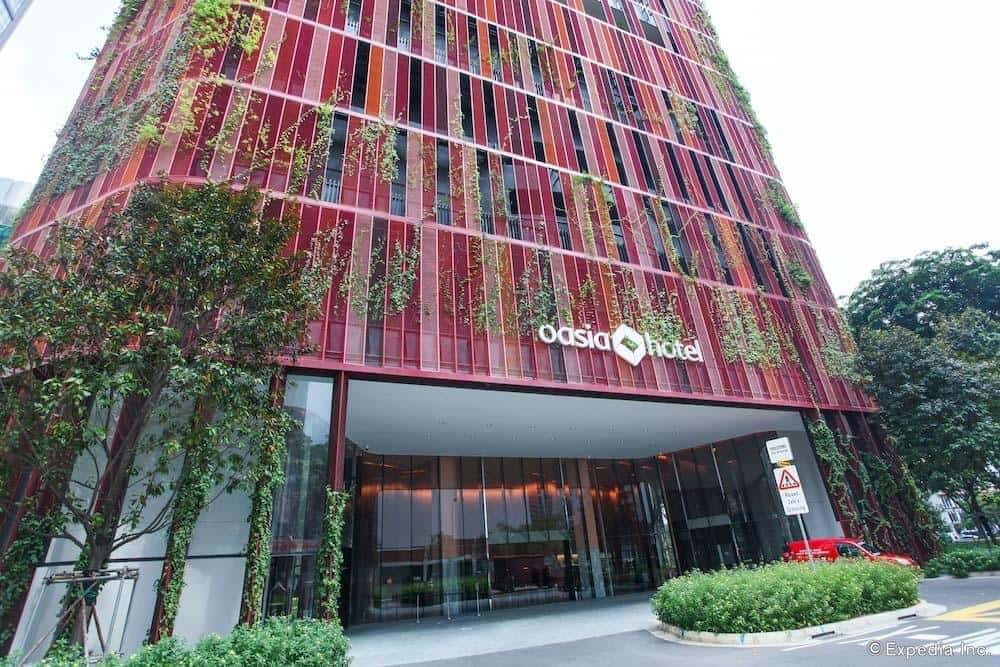
Some Examples
- Analysis and conceptualisation for a façade in a hot, dry climate.
- Express towers_façade concept with parametric passive shading features
- Façade with vertical landscape & passive shading.
Various analytical procedures and simulation tools are now readily available for the evaluation of high-performance complex façade design. In design, manufacturing, and installation, the architect’s tireless artistic pursuit and the continuing emergence of urban complexes and super high-rise buildings give façade design technology plenty of space to play its role, and the advent of BIM brings good opportunities for the development of façade design engineering, fabrication, and installation.
Future Of Façades & Fenestrations – 50 Years From Now
According to Ar. Amit Gulati, City planning is adapting to include intelligent design and smart technologies. This would have a significant impact on the design of façades, as façade designs are a reflection of the city as well. Hence, the architectural design of the building envelope needs to be sustainable and energy-efficient. The materials will become far more durable, malleable, and environmentally friendly. Solutions like hollowed-out bricks that prevent excessive heating or cooling will become more apparent. Technology will also improve to instantly provide quick, easy, time-saving, and environmentally responsive façade solutions with sustainable materials. Smart façades that are automated to be climatically responsive will also become extremely common and widely used.
One of the most significant predictions made for the future of the façade design is that non-renewable and non-recyclable materials will be booted entirely out and be replaced by self-renewing materials like steel, brick, and aluminium, vows Ar. Dhawan. There is an overwhelming need for façades to conserve energy, and in the next fifty years, it can be assumed that the façade will be completely carbon neutral. Façades have also taken up a much more technological route. In future, they can maintain the internal homeostasis of the building operated through remote control or an app.
“We are already witnessing how AI and IoT have touched almost every aspect of our lives. Energy efficiency and sustainability are the key factors driving façade design, and in the future, this is going to be more and more driven by AI. AI-controlled façade materials and systems will change the way we experience and interact with buildings,” say Ar. Nishanth & Ar. Veda. The façade, integrated with IoT, will start to become an extensive data collection centre, which can be used for the more efficient functioning of the complete built environment. For a simple example, a façade that can change itself based on the weather conditions outside & sense the occupant load inside can start talking to the automated shading device and the HVAC system to achieve maximum daylight penetration with minimal heat gain and ensure efficient cooling of the built space. The possibilities are endless. Architects from Katerra Design also add that the use of recycled materials and biodegradability will start becoming important factors.
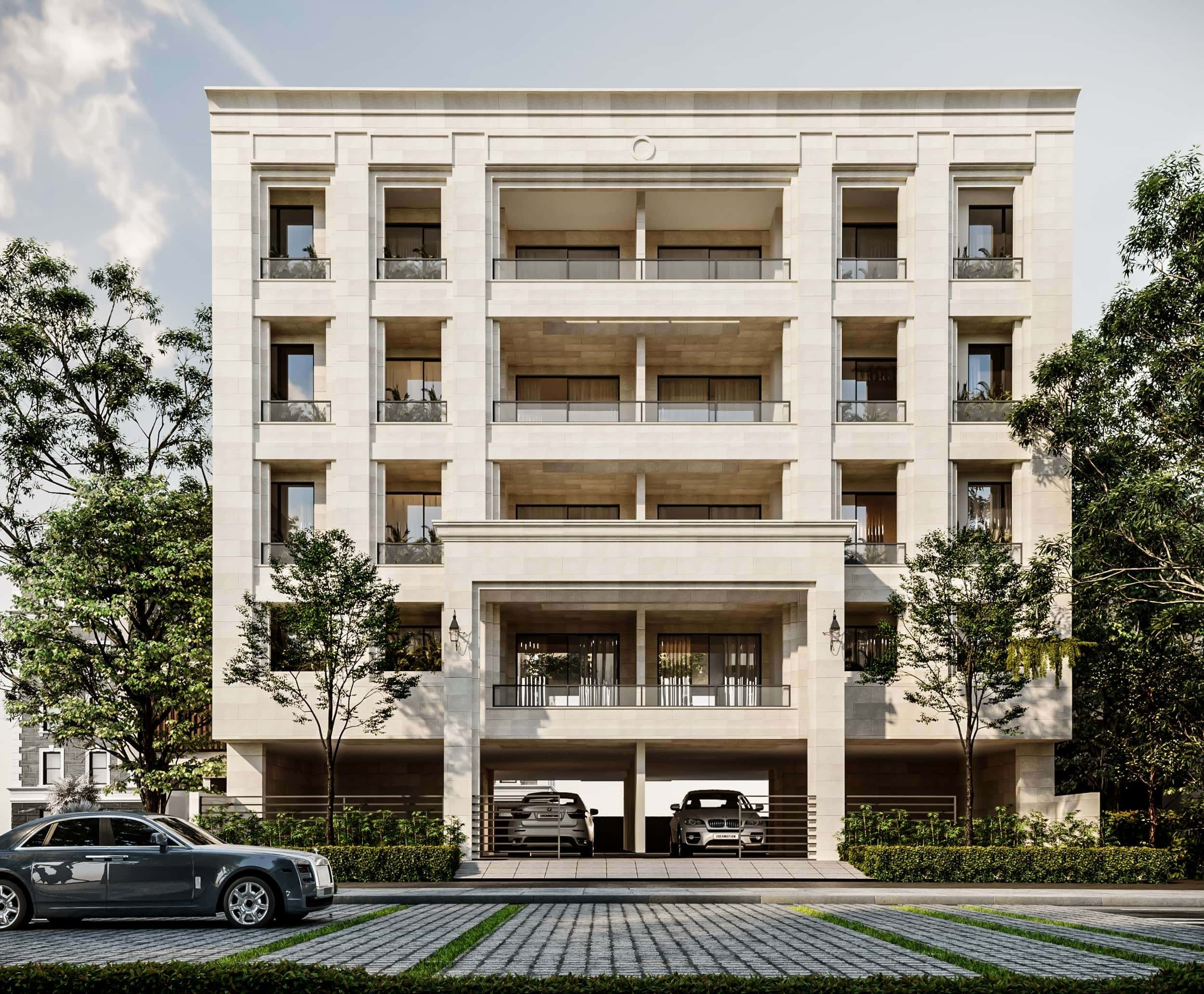
Ar. V Singal believes that kinetic façades can become a common practice within the next 50 years. The flexibility it provides in sustainable design, being aesthetically rich, is very promising. “We need to make the technology more viable in terms of availability and affordability. A kinetic façade enables us to control solar heat gain, daylight, and ventilation, regardless of the coordinates of the site or the season. Once designed and installed, the kinetic façade will adjust with the help of technology. And with the growing age of artificial intelligence, the horizon of possibilities has widened even more,” he is hopeful.
According to Ar. RK Gulati, an integrated approach to building façades with integrated building systems is the way ahead, considering conscious energy usage and use of materials having the least ecological impact. We also should look at providing improved sustainability goals for the mass consumers as well. The use of appropriate material and technology combined with passive systems has to be made mainstream. For example, use solar panels to provide shading and/or transparent solar panels as glazing. Increased use of vertical landscape features to moderate the microclimate is another method to improve the overall reduction in energy use.
Ar. RK Gulati expects that full glass façades will no longer be representative of ‘global’ and ‘high-tech’ but symbolise a ‘high-waste’ culture as it increases Capex, increases demand on the energy used for air conditioning/cooling, etc. High-performance glass and shading devices on a full glass façade are a paradox ab initio. “We should not be waiting 50 years to change this mindset for the sake of reducing our carbon footprint. Research and application of our indigenous vernacular systems’ approach to the climate for contemporary façade design is an intelligent and sustainable way ahead,” addsGulati.

Post pandemic, the focus has most evidently shifted to occupant wellbeing, health and comfort, observes Ar. Kaw. “I personally foresee that non-sustainable façades will be a thing of the past soon, and strict guidelines will have to be adhered to regarding the efficacy of the façade in terms of thermal control. Also, in tune with the new age contemporary design aesthetics, façades will no longer remain just a functional skin, but shall unveil a sense of awe, beauty, complexity and be able to due to interpret an architect’s imagination as perceived due to the augmentation in digital fabrication technologies as well as computational design software, thereby enabling more accuracy and a plethora of possibilities”, explains Ar. Kaw. The diverse reiterations possible now will greatly impact the building science jargon, likewise. Also, the dynamism in façades will be in tune with the environment and the microclimate at the site. Façades will also become a natural habitat for nurturing flora and fauna, empowering the green building movement. The vertical gardens are making their way in urban life to save mankind from harsh conditions of the environment while saving the planet itself, predicts Ar. Kaw.
Ar Badan too forecasts parametric façades, façades that are technologically controlled to entirely open a building, façades that adapt to the climate, and green façades as some of the future façade designs that will become extremely popular. The architectural design of the building envelope shall move towards sustainability and energy efficiency. Solutions like recycled bricks, recycled plastic, recycled windows & doors, etc., shall become more prominent. Technological advancements also allow for an automated, climate-responsive façade design, he adds.
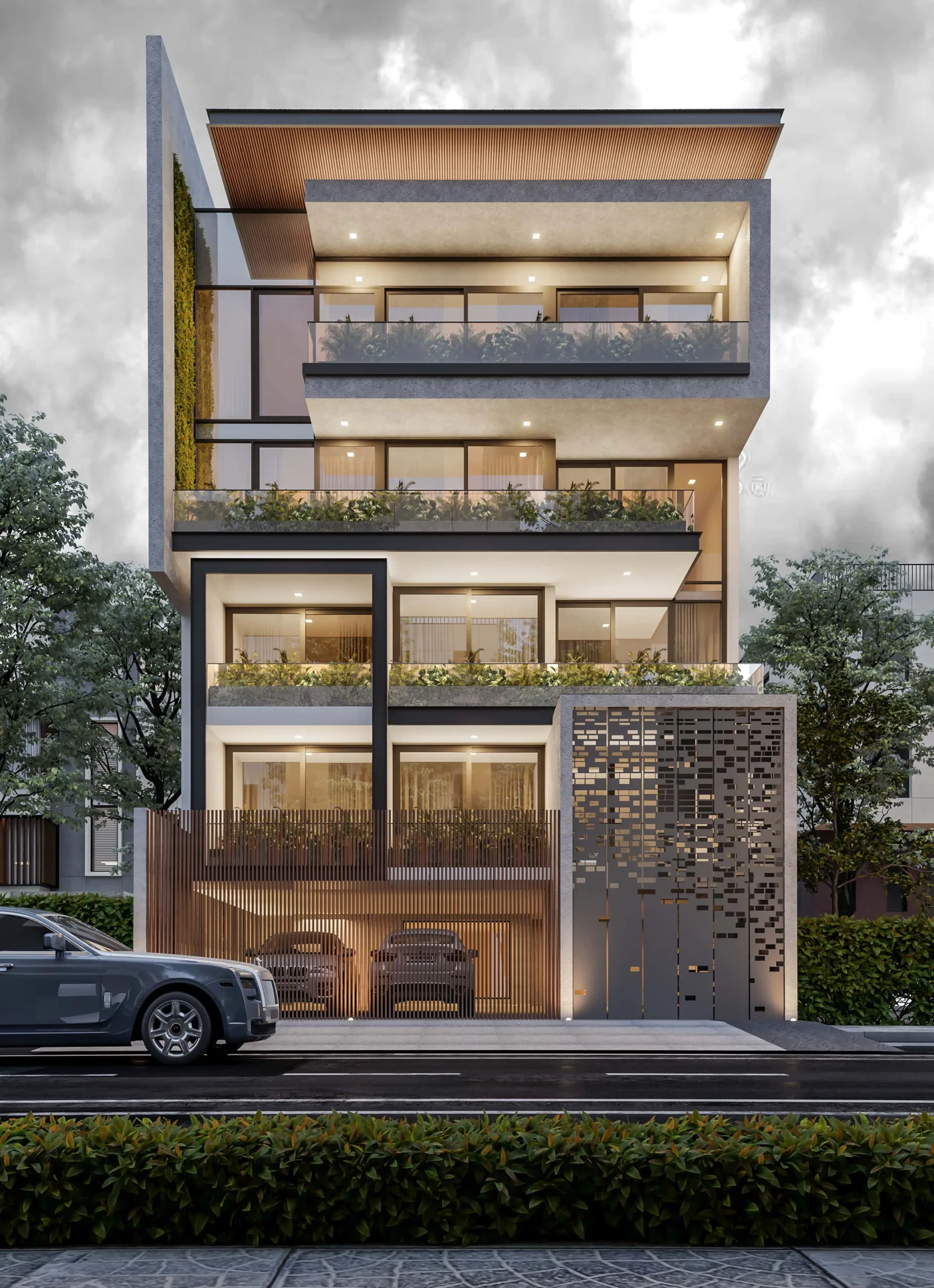
Conclusion
With the manufacturers offering state-of-the-art intelligent materials that can respond to the environment, architects have begun their adopt them in the buildings they create. These dynamic material solutions, along with the latest in software technologies, to create the most sustainable building using computational analytics can provide optimal solutions. Moreover, the Internet of Things (IoT) can be integrated with the overall building management system to build intelligent buildings that are efficient in use and easy to maintain. It is a matter of time and an increasing rate of adoption before the futuristic building becomes commonplace in the Indian skyline. Continuous innovations bring in products and solutions and serve the façades of today and tomorrow in an intelligent, energy-efficient and sustainable manner. It is this sense of agility from manufacturers, curiosity and sense of experimentation from designers that will help us leapfrog into the arena of ‘futuristic façades’.
